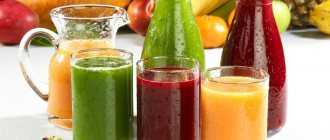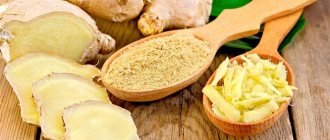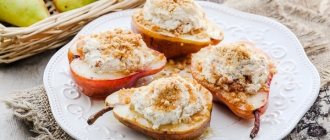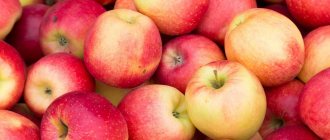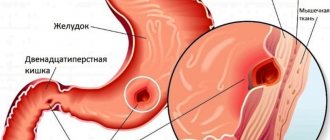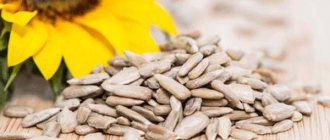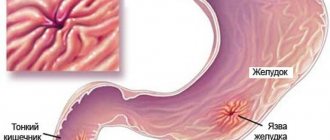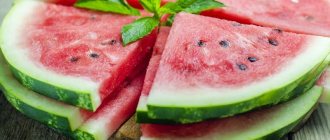Gastric ulceration is a dangerous disease that requires complex therapeutic treatment, including menu adjustments. The list of permitted products is established by a gastroenterologist based on the examination completed.
The diet of an ulcer should consist of healthy foods. Moreover, vegetables play a big role. Since food of plant origin helps to normalize the gastrointestinal tract, restore acid-base balance and strengthen the immune system.
Are vegetables allowed for ulcers?
Plant foods are important for the body to function properly. Garden crops are rich in beneficial microelements, valuable minerals and vitamins. In addition, such products contain pectins, which protect the gastric mucosa from negative effects and have the following effect:
- beneficial substances that get inside bind toxins and remove them from the intestines;
- microflora is normalized;
- the processes of fermentation and decay are inhibited;
- intestinal motility improves;
- the cleansing process is accelerated.
Important: If you stop eating vegetables, the patient will experience increased gas formation and flatulence. Therefore, vegetables for stomach ulcers must be included in the menu.
However, it should be noted that not all vegetables are beneficial for ulcers. Some cause irritation of the mucous membrane and increase the secretion of gastric secretions. In addition, such products should be completely excluded from the diet in fresh form in case of exacerbation of ulcer pathology.
Contraindications
Regardless of the variety and cooking characteristics, cabbage can be eaten only during the period of remission. Cabbage should be excluded if the following pathologies develop:
- Acute enterocolitis accompanied by diarrhea.
- Problems in the functioning of the thyroid gland.
- Bleeding in the gastrointestinal tract.
Cabbage can be a very useful product for stomach ulcers, but only if it is prepared correctly. Therefore, before including it in your diet, you should consult with a specialist who will help you choose the type of cabbage and in what form it is best to eat it.
What vegetables are allowed during an exacerbation period?
What vegetables can you eat if you have an ulcer during an exacerbation? The ulcer menu for the disease in question includes food that does not cause intestinal irritation. In addition, it is important that foods do not provoke an increase in hydrochloric acid. These include:
- potato;
- zucchini;
- carrot;
- pumpkin;
- some varieties of cabbage, except white cabbage;
- greenery.
This plant food has healing properties: it heals wounds, enriches the body with useful microelements, improves immunity and speeds up the healing process. However, so that vegetables do not provoke an aggravation, they are subject to heat treatment.
Potato
Potatoes are recommended for stomach and duodenal ulcers, not only when they fade, but also when they are severe. This root vegetable contains many beneficial vitamins. In addition, potato tubers are rich in carotene, organic acids and microelements. But in order to benefit from this culture, it is important to know how to prepare it correctly:
- in case of exacerbation of the disease, it is strictly forbidden to fry and consume root vegetables;
- potatoes may be baked in their own skins;
- You can also prepare puree in water or eat it boiled.
Potatoes do not cause an increase in acidity, block inflammation and eliminate cramps. In addition, the root vegetable contains fiber that does not provoke intestinal irritation and does not have a stimulating effect on peristalsis. But it should be noted that when the defect worsens, potatoes are consumed only warm.
Broccoli
Broccoli is also useful for duodenal ulcers. It is rich in folic acid, contains many useful trace elements and salt. Moreover, this culture contains a number of valuable vitamins that have an antiulcer effect and inhibit the activity of the main causative agent of pathology, Helicobacter.
In addition to broccoli, other varieties of cabbage are also indicated for ulcerative defects affecting the gastrointestinal tract:
- colored;
- Beijing;
- sea and pickled in small quantities.
As for white cabbage, it is not advisable to add it to your diet. Since this garden crop promotes the active production of acidity and gas formation. This food of plant origin is allowed only when the pathology subsides, in a small volume.
But cauliflower will only bring benefits. Healthy purees and soups are not prepared from it. At the same time, it is better to cook dishes from the inflorescence. Since the leaves negatively affect the mucous membrane, damaging it.
As for stewed or salted cabbage, such dishes are prohibited. Excessive consumption of sauerkraut and seaweed will also do more harm than good. Therefore, during an exacerbation, it is recommended to introduce such dishes into the diet in moderation.
Carrot
Carrots will also be useful for stomach ulcers in the acute stage. It contains vitamins and useful minerals. It should be noted that only boiled and ground fruits are allowed for consumption. Since the culture in its raw form promotes the production of gastric secretions.
In case of ulcerative exacerbation of the intestines, the root vegetable is added to the diet in small quantities. And when remission occurs, gastroenterologists recommend regularly drinking freshly squeezed juice as a preventative measure.
Pumpkin
If you have an aggravated stomach ulcer, you can add pumpkin to the menu. This garden crop is considered a real storehouse of the following substances:
- vitamins B, C and A;
- measure and copper. By the way, these elements are difficult to find in other vegetables;
- cellulose;
- potassium and carotene.
In case of ulcerative exacerbation, it is allowed to eat baked, boiled or stewed pumpkin. At the stage of exacerbation, pumpkin juice mixed with acacia honey is useful.
Important: For ulcerative exacerbations, gastroenterologists allow you to drink pumpkin juice 40 minutes before meals. This allows you to eliminate pain and alleviate the course of the pathology.
The main advantage of pumpkin: the ability to inhibit the production of gastric secretions, normalize digestion and eliminate inflammation of the mucous membrane. Also, the product does not affect peristalsis.
Zucchini
There is a list of vegetables that are indispensable for ulcerative pathology. One of these is zucchini. This dietary garden crop is rich in the following components:
- vitamins B, C and E;
- potassium;
- iron.
In addition, this fruit contains components that block the development of malignant tumors, eliminate inflammation and normalize gastrointestinal motility. But it is necessary to highlight that in case of an ulcer, zucchini can only be consumed boiled, stewed or baked. Because raw fruits help increase the production of hydrochloric acid.
Greenery
Greens are very beneficial for the human body. For ulcer sufferers, the use of these plants is mandatory. The permitted ones include the following:
- Salad. The culture is rich in carbohydrates, vitamins and fats. In addition, this plant-based crop contains phosphorus, calcium, iron and potassium. Due to this composition, the salad is recommended fresh for ulcers. The juice of this plant is also useful;
- Celery. An indispensable culture for the disease in question. Celery contains vitamins, oxalic acid, purines and essential oils. These elements activate the healing of erosions and create a film that protects the mucous membrane from the effects of hydrochloric acid;
- Dill. It is recommended to introduce the plant into the menu in case of exacerbations in small quantities. Dill contains phosphorus salts, magnesium, calcium, potassium and vitamin C. Regular use of the culture during the attenuation of pathology helps prevent exacerbations and accelerates the healing of wound areas;
- Parsley. When an ulcer worsens, parsley is also recommended to be added to the menu. This plant contains carotene, beneficial microelements and vitamins. The culture promotes mucosal healing. Therefore, it is recommended to consume it on an empty stomach 30-40 minutes before meals.
Depending on the course of the defect in question, the patient’s menu is expanded with other equally useful crops. However, it is better to discuss this issue with your gastroenterologist.
Is it possible to eat cabbage if you have a stomach ulcer?
The main disadvantage of this product is the excess fiber. During the period of exacerbation of gastrointestinal diseases, this component can cause irritation of the mucous membrane, which will aggravate the course of the inflammatory process.
Therefore, you should systematically eat cabbage only during the period of remission and on the recommendation of a doctor. It also all depends on what kind of cabbage will be used for stomach and duodenal ulcers: white cabbage, cauliflower or sea cabbage.
White cabbage
It is a conditionally prohibited product for ulcers. To determine the advisability of its use, the following factors must be taken into account:
- at what stage the disease is;
- how often exacerbations occur and what nature they have;
- whether the patient suffers from concomitant gastrointestinal diseases;
- what is the patient's age?
This vegetable actually contains a number of substances that promote healing and strengthening of the mucous membrane. However, it is this plant variety that is richest in fiber. Therefore, in case of ulcers, it often causes harm rather than helping. White cabbage for ulcers can be consumed as follows:
- During the period of remission, it is allowed to consume the vegetable in stewed, baked or boiled form. The fact is that only after undergoing heat treatment does the product stop increasing the acidity in the patient’s stomach.
- In case of exacerbation of the disease, it is necessary to completely exclude white cabbage.
Important! Even after eliminating the negative symptoms of a peptic ulcer, eating fresh cabbage in the form of salad and pickled cabbage is strictly prohibited. The exception is juice, which should be squeezed from fresh vegetables.
Vegetable stews and other dishes made from white cabbage for diseases of the gastrointestinal tract should be consumed only with the permission of a doctor.
Colored
This is exactly the plant variety that is most suitable for people suffering from gastric and duodenal ulcers. Eating cauliflower for stomach ulcers should be based on the following nuances:
- Contains protein components and light fiber, which are easier to process and absorb by the body, without irritating the gastric mucosa.
- It has a pronounced antitumor effect, and therefore its systematic use helps prevent the transition of an ulcer to an oncological pathology.
- Eating stewed and boiled cauliflower helps to generally strengthen the body and increases immune defense, which is also important in the treatment of ulcers.
Broccoli
Add cabbage to your diet according to the following rules:
- Fresh broccoli is prohibited for ulcers. The plant contains substances that provoke hypersecretion of hydrochloric acid secretion, which contributes to the occurrence of heartburn and a general deterioration of the patient's condition.
- You can eat broccoli stewed or boiled. It is also allowed to bake and steam vegetables.
Important! Broccoli for stomach ulcers reduces the activity of the Helicobacter pylori bacterium, which provokes the development of ulcers. This plant acts as a natural antibiotic, suppressing the development of harmful microflora.
Marine
It is a valuable source of zinc, which is very important for the body in diseases of the gastrointestinal tract. However, you need to eat seaweed with caution, because it has the following disadvantages:
- Increases acidity.
- Increases the load on the walls of the stomach.
Therefore, seaweed can be used as food for stomach ulcers only in the absence of exacerbations.
What vegetables are allowed during remission?
During the period of attenuation of the disease, the list of permitted vegetables can be expanded. Doctors often allow the following crops to be eaten:
- beet;
- cucumbers and tomatoes;
- onion;
- bell pepper
These fruits help increase the production of gastric juice. Therefore, they need to be treated with caution and gradually introduced into the diet. However, plant foods cannot be completely eliminated. Since each culture is rich in microelements and other beneficial substances for the body.
Beet
Beetroot for stomach ulcers is indicated in the attenuation stage of the pathology. During severe cases, this product is avoided. Because in addition to useful elements, beets contain a large amount of natural acids.
Beetroot is prescribed for duodenal ulcers as a preventive measure. The most suitable for consumption is beet juice with acacia honey. Take the drug in courses.
Another question that interests many people suffering from gastrointestinal problems is whether it is possible to eat raw beets for stomach ulcers. The most suitable for consumption would be boiled beets or juice squeezed from them. However, if you want to eat the crop raw, its consumption is indicated in small quantities.
Cucumbers and tomatoes
Is it possible to eat fresh cucumbers and tomatoes if you have a stomach ulcer? These vegetables are strictly contraindicated during an exacerbation. It is permissible to eat cucumbers for stomach ulcers only during remission, observing the following rules:
- fruits are eaten only fresh;
- eat cucumbers in small quantities, after removing the peel;
- It is better to add the culture to other dishes.
As for the question of whether tomatoes are allowed for stomach ulcers, everything is not so simple. Tomatoes activate the production of gastric secretions, have a negative effect on the intestines, block the healing of wound areas and provoke inflammation. In addition, this fruit negatively affects the functioning of the pancreas.
In general, gastroenterologists allow the consumption of tomatoes only during remission, in small quantities. with pre-peeled skin.
Onion
In the fight against the disease in question, onions are also allowed, but only for the attenuation period. They eat it boiled, combining it with other dishes. Onions are rich in flavonoids and have a good antimicrobial effect. In view of this, it will be indispensable as a preventive measure.
bell pepper
Bell peppers should be completely excluded during an exacerbation period. Because this vegetable helps increase the secretion of gastric secretions. But at the moment of attenuation of the pathology, the fetus is allowed due to a number of beneficial properties:
- pepper contains substances that block the development of malignant tumors;
- the fruit is considered one of the powerful antioxidants of natural origin;
- The culture is endowed with good antibacterial properties, due to which it is able to inhibit the atypical activity of Helicobacter.
Important: When the ulcer subsides, it is allowed to add a little garlic to dishes as a seasoning. It is prohibited to consume this crop without preliminary heat treatment.
By adhering to the diet developed by a gastroenterologist, it will be possible to speed up the healing process of erosions that have affected the mucous membrane. At the same time, it is important to remember that you need to eat foods of plant origin in small quantities in order to prevent exacerbation in the future.
Diet for gastritis and stomach ulcers
Content
Diet for gastritis and stomach ulcers
What should you not eat if you have gastritis and stomach ulcers?
What can you eat if you have gastritis and stomach ulcers?
3 medicinal products for gastritis and stomach ulcers
Is it possible to eat, drink...?
Diet for gastritis and stomach ulcers
For peptic ulcers, for successful therapy and to avoid relapse, it is necessary to follow proper nutrition.
Its essence is as follows:
balanced food and caloric intake;
fractional nutrition;
drinking regime.
Balanced diet
A balanced diet means a diet that includes proteins, fats, carbohydrates in equal proportions, as well as essential microelements, macroelements, fat and water-soluble vitamins. The caloric content of food is selected according to age characteristics and physical activity. The ratio of intake of fats, proteins and carbohydrates is most favorable in the following proportions: 1:1:4. Most of the diet is occupied by carbohydrates in the form of simple and complex sugars and plant fiber from vegetables, fruits, cereals, and cereals.
The role of fiber in nutrition and the digestive process is difficult to overestimate - it acts as a kind of “broom” that collects stagnant food remains from the walls of the gastrointestinal tract, accelerates the passage of feces in the large intestine, and is a useful substrate for intestinal flora. In addition, plant fiber has an alkaline environment and partially neutralizes the acidity of the juice produced by the glands of the gastric mucosa, which is especially useful if the acidity is higher than normal.
For ulcers, it is necessary to take fiber that has undergone heat treatment so as not to injure the damaged walls of the stomach.
Animal proteins for stomach ulcers are consumed in steamed, boiled, finely chopped form, in fractional portions. Boiled egg whites can be eaten without restrictions, except for the yolks. Milk proteins contained in any food can be considered a cure for ulcers.
Vegetable fats are healthier for ulcers than animal fats, given that they are chemically neutral and easily digested by the body.
The calorie content of food for a young and physically active person should be higher than for a sluggish, passive individual. The average energy expenditure of an adult is 3000 kcal.
Fractionality of food
Small meals are necessary so as not to unnecessarily stretch the ulcerated walls of the stomach. A small volume of food bolus will require a not very large amount of gastric juice for its processing, which chemically irritates the erosive surface, and without a long delay will move to the next section of the gastrointestinal tract.
Digestive juices are constantly released, even without stimulation. In order to prevent their effect on the inflamed walls of the stomach, it is necessary to consume a small amount of neutral light food every three hours. That is why fractional meals are classified as therapeutic.
Drinking regime and balance for gastric ulcers
The procedure for taking fluids for a stomach ulcer can also be considered a therapeutic procedure for a number of reasons. A lack of water in the body leads to dehydration, thickening and viscosity not only of the blood, but also of all liquid media, which makes it difficult to evacuate decay products from cells and prevents their rapid regeneration. With a reduced drinking regime, the acidity of gastric juice increases due to its viscosity and increased concentration, which, in the absence of a food bolus in the stomach, leads to additional irritation of the erosive surface. Fractional intake of water, decoctions, and liquid food helps bring liquid environments into physiological balance.
What should you not eat if you have gastritis and stomach ulcers?
Treatment of any inflammatory diseases of the gastrointestinal tract, including gastric ulcers, is a long-term process, requiring, in addition to taking medications, adherence to a diet. In this treatment, the right food itself can act as a medicine. The main thing is to understand the essence of the digestion process and have an idea of the pathology of this disease.
What is gastric ulcer (GUD)
A gastric ulcer is a localized injury to the lining of the stomach wall and sometimes to deeper tissues, depending on the severity of the ulceration. A local defect is formed under the action of enzymes, hydrochloric acid of gastric juice, or bile thrown into the stomach as a result of gastroduodenal reflux. The trophism in this area is impaired and recovery is slow, with a period of remission alternating with a period of exacerbation. Superficial damage is called erosion; it heals, unlike an ulcer, without scar formation. When an ulcer heals, it leaves scarring changes on the surface of the stomach.
When you get an idea of the process of peptic ulcer disease, it becomes clear why during treatment, even during a period of deep remission, some foods should be excluded from the menu.
What should you not eat if you have a stomach ulcer?
Beverages:
– any strong and low-alcohol aperitifs;
– carbonated, concentrated, flavored, canned juices, waters, cocktails;
– intensively brewed tea, coffee, chocolate;
– freshly squeezed vegetable and fruit drinks
– dairy products, cream, kefir, fermented baked milk, yogurt, yogurt, ayran, other fermented milk drinks.
All of the listed drinking products cause additional irritation of the gastric mucosa and prevent the healing of damaged areas.
First courses and cold soups:
– any meat and fish primary broths and soups prepared with them;
– okroshka, sour cabbage soup, cold beetroot soup, mushroom soups.
These dishes have an acidic environment and interfere with recovery.
Meat dishes:
– exclude from the diet fatty meat, poultry, fish, lard, as well as canned meat and fish products, smoked meats, sausages, pates, jellied meats, etc.
Meat products are digested in the stomach for several hours, the above delicacies leave a food bolus in the stomach for a longer period, causing preservatives to additionally secrete gastric juice, leading to a general increase in the acidity of the environment.
Other protein products:
– smoked, processed, hard cheeses;
– hard-boiled, fried eggs;
– fish roe in salted and canned form.
Canned food: any meat, vegetable, fruit preserves and preserves.
Spices: sauces, ketchups, mayonnaise, mustard, vinegar, pepper, everything that leads to additional irritation of the taste buds.
Cereals that have coarse fiber that injures the walls of the stomach: pearl barley, corn, bran without heat treatment, wild rice, legume seeds.
Vegetables containing coarse fiber in their raw form cause severe gastrointestinal irritation and bloating. Hot and spicy vegetables burn the weak, erosive stomach wall and can cause severe abdominal pain. Such vegetables include: all types of cruciferous vegetables, tomatoes, cucumbers, plants of the bulbous family, sorrel green crops.
Fresh berries and fruits If you take them, then in the form of weak compotes and decoctions.
Nuts have coarse fiber and greatly injure the sore areas of the inflamed surface.
Yeast and butter products contain fungi, cause excess fermentation and gas formation, and should be excluded from the diet.
What can you eat if you have gastritis and stomach ulcers?
Soups:
– meat and fish in secondary broth, it is advisable to use poultry, veal, avoid pork;
– milk cereal soups;
– pureed vegetable soups.
Second meat courses: from lean ground, steamed or boiled veal, poultry, rabbit in the form of meatballs, cutlets, meatballs, soufflé. Fish cutlets, souffle, steamed or baked in the oven.
dairy products that have undergone heat treatment.
Eggs in the form of an omelet , cooked soft-boiled, protein soufflés that have undergone heat treatment.
Cereal dishes in the form of liquid porridges, jelly, with the addition of vegetable oil, sometimes a small amount, of butter.
Fruits and vegetables after heat treatment, with the rough skin removed, in the form of pureed dishes.
Drinks : jelly, decoctions, weak compotes, diluted teas.
The bread is not fresh, preferably unleavened, or in the form of crackers soaked in soup or tea.
Vegetable oils , sometimes unsalted butter.
3 medicinal products for gastritis and stomach ulcers
Food, in addition to being a source of energy, can serve as a medicine for diseases of the stomach and intestines. Medicinal food products are milk, white cabbage and natural bee honey.
Healing properties of milk
Milk is the very first product that is consumed by humans from birth. It contains all the nutrients and minerals necessary for the body, as well as a high content of vitamins and enzymes.
For gastric ulcers, you should take boiled or pasteurized milk so as not to introduce pathogenic microorganisms that multiply very quickly in the milk environment.
Milk itself, as a food product, has a slightly acidic environment and very gently stimulates the production of gastric juice, without causing harm even when taken during the acute period of the disease. Thanks to this property, milk is included in the diet for peptic ulcer at any stage of the disease.
Milk is a protein product containing three types of animal proteins. As a percentage of the total amount of protein, its composition is expressed as follows:
– casein – about 82%;
– lactoalbumin - about 12%;
– lactoglobulin – 6%.
Proteins are in the form of a colloid, are easily digestible, are able to envelop the walls of the stomach, protecting them from further injury by acids and enzymes of gastric secretion, relieving the patient of heartburn and hunger. Milk contains linolenic acid, which restores immunity and suppresses the activation of pathogenic processes.
Milk contains a complex of vitamins A, B, E, K, D, which are catalysts for the process of regeneration of the gastrointestinal mucosa.
It also has the property of calming the nervous system, which is extremely necessary for people with stomach ulcers, because in most cases this disease develops during prolonged stressful conditions of a person.
For stomach ulcers, drink a small amount of skim milk warm at night. Goat milk is even more healing, but it should be diluted with boiled water 1:1.
Medicinal qualities of honey
Honey is a natural storehouse of microelements, enzymes, minerals and nutritional components. It has high energy value, as well as pronounced bactericidal properties.
Honey has a changing percentage biochemical composition, but the groups of substances presented in it are constant by name.
Honey components:
– simple sugars that do not require energy expenditure for breakdown. They begin to be absorbed already in the oral cavity (glucose and fructose);
– protein and non-protein nitrogenous substances of bees and plant pollen in the form of enzymes that break down complex carbohydrates;
– inorganic and vegetable acids; –
– more than 40 types of macro and microelements in variable ratios, the largest amount of potassium, copper, phosphorus, calcium.
All components of honey are able to participate in regulating the vital processes of the body, restoring the metabolic processes of cells and tissues. The vitamin composition is represented by a wide spectrum of group B, vitamins A, C, E, H, K, which provides a beneficial calming effect on the nervous system and tissue regeneration processes when taking honey.
Resorption of a small amount of honey on an empty stomach saturates the body with glucose and fructose, the bactericidal substances of honey disinfect the gastrointestinal tract, strengthen its walls by restoring metabolic processes in the cells of the mucous membrane.
Taking a teaspoon of honey before bed will calm the nervous system, reduce smooth muscle tension, and allow the body to have a good rest and recovery.
Miracle cabbage juice
The medicinal properties of freshly squeezed round cabbage juice have been noticed for a long time. It contains a whole range of microelements that have a beneficial effect on health: potassium, magnesium, sodium, iron, calcium, phosphorus, silicon, sulfur, fluorine, chlorine, iodine. The last four listed microelements disinfect damaged walls of the gastrointestinal tract, creating unfavorable conditions for pathogenic microflora and bacteria of the genus Helicobacter pylori. In addition, cabbage juice contains vitamin U, which has the ability to heal erosive surfaces of the mucous membranes of the human body.
Cabbage consists of coarse fiber that can harshly cleanse the walls of the digestive tract, but in case of gastric ulcers, especially at the peak of an exacerbation, vegetable fiber from fresh vegetable cabbage is contraindicated due to the possibility of mechanical damage to the diseased area of the digestive organ. It is safer to eat cabbage in case of gastrointestinal ulcers in boiled, stewed, steamed form; cauliflower, kohlrabi, and broccoli have more delicate fiber and a similar composition of micro and macroelements.
To treat stomach ulcers with reduced secretion, take 100 grams. juice, squeezed and left in the air for 30 minutes, half an hour before meals. Drink 300 grams per day. healing elixir.
Is it possible to eat, drink...?
This section, in the form of answers to frequently asked questions from patients, outlines in more detail how to eat various foods.
Is it possible to drink kefir, fermented baked milk, yogurt?
During the acute period of the disease and the first week after it, kefir, which is a product of fermented milk fermentation, is contraindicated to drink, as it will aggravate the inflammatory processes of the stomach. After this period, you are allowed to drink fresh, non-acidic, warm kefir.
Yogurt is a fermented milk product containing bifidobacteria, which balance the microflora of the gastrointestinal tract, competitively displacing pathogenic strains of Helicobacter pylori, which provoke the occurrence of peptic ulcers. If you have a fresh culture of bifidobacteria, yogurt can be prepared at home, which will ensure the availability of a freshly prepared product at any time.
Ryazhenka is a traditional fermented milk product based on baked milk fermented with bifidobacteria and lactobacilli. For people with stomach ulcers, a drink with a reduced percentage of fats is recommended, as they are more easily absorbed by the body.
Is it possible to eat tomatoes and cucumbers?
These vegetables have a rough, tough skin, and the juice contains a wide variety of organic acids and minerals. At the height of gastrointestinal ulcers, the entire specified complex irritates the inflamed area of the stomach, but during the recovery period, with special treatment, cucumbers and tomatoes are very useful in small quantities in the diet. The processing is as follows: the vegetables are thoroughly washed with water, the hard peel is removed, grated or chopped in a blender, and added to the main dish in the form of a salad. With light heat treatment, the fiber of tomatoes and cucumbers becomes much softer and less irritating to the walls of the stomach.
Can you eat bananas?
Banana is a valuable food product, easy to digest, high in calories, rich in vitamin and mineral composition. In addition to potassium, calcium, magnesium, iron, sodium, fluorine, phosphorus, it contains fiber, pectin, beta-carotene, fructose. The composition includes vitamins B1, B2, B6, C, PP. In addition to the listed components, bananas contain essential amino acids: tryptophan, methionine, norepinephrine, which can actively regenerate the structure of damaged tissues. Serotonin calms the autonomic nervous system, relaxes the tense smooth muscles of the stomach, allowing it to rest and recover.
High calorie content, low acidity, rapid evacuation from the stomach, the ability of pectins contained in bananas to envelop and heal damaged mucous membranes bring this product to the forefront of dietary nutrition, even in the acute period of the disease.
Is it possible to eat cheese and cottage cheese?
Cottage cheese and cottage cheese are dairy products containing casein protein, freed from whey. The mineral and vitamin composition is the same as in fermented milk products, so it is difficult to overestimate their nutritional benefits for gastric ulcers. It is recommended to eat low-fat varieties after heat treatment, preferably home-cooked.
Is it possible to eat eggs?
eggs is allowed and necessary. This is a very valuable food product.
– eggs consist of proteins albumin and globulin;
– they contain a lot of vitamins A, B, D, E;
– micro and macroelements: calcium, potassium, iron, phosphorus, sulfur, magnesium, fluorine, etc.;
– saturated and polyunsaturated fatty acids.
This is a dietary product, but if you have a stomach ulcer, you need to eat it after heat treatment.
Is it possible to eat watermelons?
Watermelons contain a lot of fiber, sugar and fruit acids. During the acute period it is harmful to eat them, but during recovery it is useful to eat them as a dessert after the main diet.
Can you eat sunflower seeds?
The seeds consist of coarse fiber; in the stomach they scratch the eroded walls, increasing the area of damage. In case of any ulcerative processes of the gastrointestinal tract, seeds are prohibited for consumption.
Can I eat garlic??
In its raw form, garlic has a strong irritating effect; at the height of the disease process and during the rehabilitation period, bulbous vegetables are contraindicated for food. During the recovery period, it is allowed to eat it in small doses after prolonged heat treatment.
Can I drink coffee?
Coffee contains the stimulant caffeine, which stimulates the central nerve fibers and tones the secretion of gastric juice, which is unfavorable during the course of a gastric ulcer at any stage. It is better to give up coffee.
Can I drink soda?
Soda is an alkali; when taken orally, it relieves heartburn caused by an increased content of hydrochloric acid in the stomach, neutralizing the acid of the gastric juice. In occasional cases, you can do this, but with regular high acidity, soda cannot be cured; it can aggravate the painful process.
Is it possible to smoke?
Smoking provokes an increase in acidity in the stomach; tobacco smoke contains the poison nicotine; together with the smoke and tars formed during the smoldering of tobacco, carcinogenic substances enter the body, which together leads to serious consequences.
Is it possible to drink vodka and cognac?
In case of gastric ulcer, the consumption of alcoholic and low-alcohol drinks is prohibited. Alcoholic drinks irritate and burn the walls of the gastrointestinal tract, aggravating the disease process, leading to conditions requiring surgical intervention, often resulting in death.
Menu for a week for gastritis and stomach ulcers
Treatment of peptic ulcer disease is complicated by the fact that if there is an error in nutrition, a relapse occurs, to avoid which it is very important to follow the diet prescribed taking into account the specific course of the disease. The diet can be considered as a treatment procedure extended over time.
Get a free consultation
In what form is it best to consume?
Introducing permitted fruits into the diet is required in compliance with certain measures:
- In case of acute ulcerative pathology, only potatoes are allowed in their raw form. As for other permitted garden crops, they are eaten only after heat treatment. Can be boiled, stewed, baked or steamed;
- If the defect is chronic, it is permissible to eat root vegetables raw. However, the peel should be removed before consumption. In addition, such food is cut into small slices and eaten in small portions;
- In case of ulcerative defect, canned vegetables, salads with mayonnaise and vinegar are strictly prohibited;
- It is recommended to eat meals often and not in large quantities. At the same time, it is advisable to limit yourself to a glass of kefir or an apple at night. Because at this time of day the work of the stomach slows down. As a result, food is not processed;
- Even during the period of attenuation of the disease, spices cannot be included in the menu. Such products provoke an exacerbation, accompanied by pain, nausea and vomiting.
Important: Ulcer sufferers should definitely purchase a double boiler. This device allows you to prepare delicious dishes without adding oil and losing all the beneficial properties.
Vegetables are important and healthy. But you should eat them little by little in order to avoid dangerous health consequences. In addition, if side effects occur, it is necessary to exclude the culture that provoked this condition from the diet and immediately consult a gastroenterologist for advice.
What vegetables are prohibited?
Many crops are allowed to be consumed in small quantities. But there are products that are strictly prohibited, these include:
- radishes and turnips;
- sorrel and spinach;
- rhubarb and horseradish;
- legumes
These fruits contain a large amount of essential oils that injure the mucous membrane, regardless of whether the disease is in the attenuation stage or has worsened. In addition, the crops listed above increase acidity and can cause bleeding.
Recipes for ulcers
Preparations for ulcer patients are based on the principle of mechanical sparing of the intestines and stomach. Vegetables are prepared in pureed form, pre-boiled. There are many cooking recipes, let's look at the simplest and most useful ones.
Oatmeal with pumpkin
To prepare, you will need to peel the pumpkin and chop it. Then, take milk and water in equal parts, add chopped pumpkin and cook for 25 minutes over low heat, stirring constantly. Next, add the flakes and a pinch of salt and cook for another 7-10 minutes. The prepared porridge is cooled and consumed warm.
Pumpkin baked in the oven
To prepare this dish you will need a pumpkin and a baking sleeve. The vegetable is peeled and cut into portions. Then, put it in a sleeve and bake for 30 minutes. Sugar is added to taste in the prepared dish.
Vegetable mix
For cooking you will need broccoli, carrots and potatoes. Vegetables are washed and steamed. Then grind it, add a little salt and a spoonful of 10% sour cream. The ingredients are mixed and consumed in addition to the main dish.
Vegetable soup puree
To prepare this dish, you will need to thoroughly rinse the potatoes and carrots. They are sent to boil in their own skins and peeled onions are added. Take out the finished vegetables and let them cool, then add cauliflower to the water where the fruits were previously boiled and boil until tender. At the same time, potatoes and carrots are peeled, cut into small slices and, together with the onions, put into a blender to obtain a homogeneous mass.
Next, add a little vegetable syrup to the crushed products so that the consistency is liquid puree. Everything is poured into a saucepan and put on fire. Blend the boiled cauliflower in a blender and add puree to the soup, add a little salt and cook for another 10 minutes over low heat, stirring constantly. This puree soup is well digestible and is suitable even for ulcerative exacerbations.
Important: For the defect in question, you need to eat in small portions 6-8 times a day. Food should be light and warm. Eating hot or cold foods is contraindicated due to the negative effect on the mucous membrane.
In addition to the recipes described above, when pathologies fade, you can prepare salads with boiled beets and young peas. When choosing peas, it is better to give preference to frozen ones, which are then heat-treated and added to dishes. It is recommended to season salads with 10% sour cream. But you need to remember that sour cream is allowed only during remission and in small quantities.
Useful tips
A properly formulated diet for ulcers promotes healing of the defect. Therefore, it is recommended to adhere to the following tips:
- all harmful foods are excluded from the menu;
- Vegetable dishes are introduced into the diet gradually;
- if the products do not provoke heartburn and belching, then the product can be consumed every day;
- After a meal, you should not go to bed immediately. Otherwise, acidic contents may reflux into the esophagus;
- It is recommended to record each new product introduced into the diet of an ulcer patient in a notebook. This will help determine the cause if the ulcer worsens.
Unfortunately, with the defect in question, with restrictions in the choice of food, a person will have to live his whole life. Since this is the only way to avoid exacerbations and deterioration of the general condition. However, if you approach the menu correctly, it will be varied and useful.
And in conclusion, it should be noted that plants contain a large amount of useful substances that can help restore the full functioning of the gastrointestinal tract. But it is important to remember that abuse of such products often causes the appearance of ulcers. Therefore, you should consume these foods in moderation.
Useful properties of cabbage
This vegetable contains vitamin U, which has the following properties:
- wound healing;
- destruction of harmful microflora;
- preventing the development of inflammatory processes;
- inhibition of tumor growth.
Considering all these properties, cabbage can be considered very effective for ulcerative lesions. But many gastroenterology experts argue that cabbage should be used with caution for gastrointestinal diseases.
